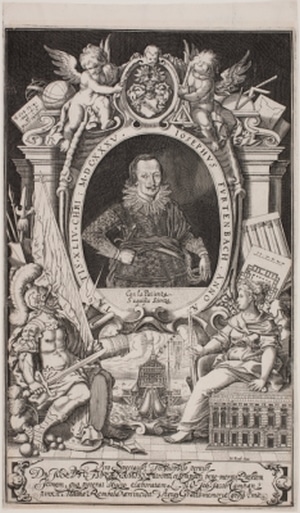Furttenbach had spent around a decade in Italy as a young man, training in preparation for a career as a merchant. Parallel to this he also studied under various teachers, acquiring an extensive knowledge of architecture and technology, contemporary Italian theatre and festival culture, and ordnance and fireworks. This knowledge would form the basis for his publications, which spanned a period of almost 40 years.
Furttenbach tried to utilise his ‘treasury of knowledge’ as cultural and social capital, along with his collection of architectural models, which soon became renowned and attracted numerous visitors. It was this that led to his appointment as the city’s second master builder. Yet he also remained active as a bookkeeper for various Ulm trading companies until the end of his life, and at certain points along the way he encountered major financial difficulties. After selling part of his collection, he made a living and financed his book projects from the (supposedly) exclusive sale of technical innovations described in elaborately decorated manuscripts.
The fact that the surviving artefacts are in comparatively good condition makes it possible to analyse various phases and practices in his ‘translation’ or adaptation of knowledge to suit the anticipated interests of potential readers or customers. Comparing Furttenbach’s manuscripts with the books he published allows researchers to trace the transformational processes and then contextualise and trace them back to their underlying social constellations with the aid of ego-documents and other sources. The correspondence with Duke August the Younger from 1627 and 1664 provides particular insights into Furttenbach’s strategies for remodelling, promoting and selling knowledge to suit his audience.
PURL: http://diglib.hab.de/?link=080
Duration: January 2017 – December 2019
Project participant: Dr Hole Rößler (team member)

